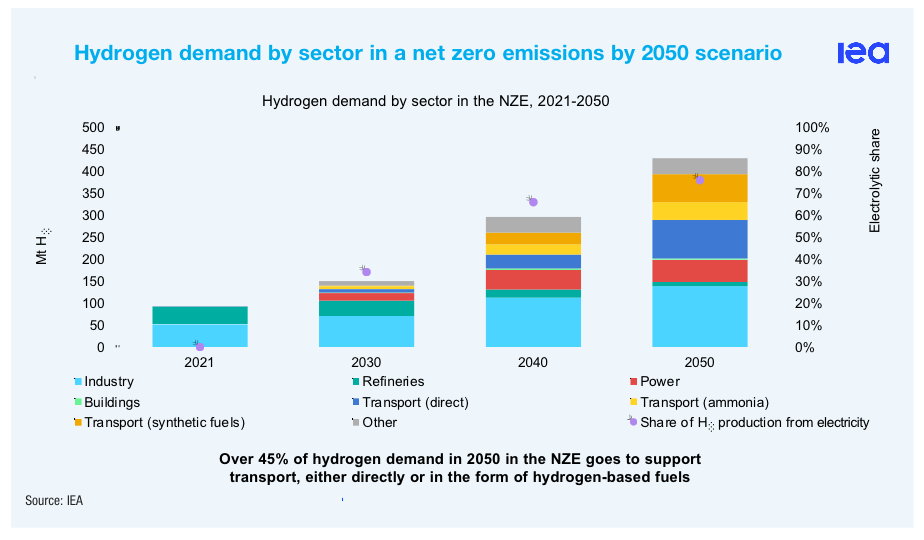Hydrogen and the future of energy in transport

Hydrogen use will become “an important lever” in the transport sector after projected advances in technology, production, and storage capacity, and will be particularly prominent in the decarbonisation of aviation, the International Energy Agency’s (IEA) Shane McDonagh claims.
 Shane McDonagh, an IEA research analyst and former researcher at UCC’s MaREI, has outlined that by 2050, hydrogen will be in widespread use throughout the heavy-duty transport sector both directly and in the form of hydrogen-based fuels, and that the most significant scope for development is in the aviation industry, although there are wider roles to be played in maritime and to a lesser extent road transport.
Shane McDonagh, an IEA research analyst and former researcher at UCC’s MaREI, has outlined that by 2050, hydrogen will be in widespread use throughout the heavy-duty transport sector both directly and in the form of hydrogen-based fuels, and that the most significant scope for development is in the aviation industry, although there are wider roles to be played in maritime and to a lesser extent road transport.
McDonagh acknowledges that these are long-term aspirations as hydrogen production is “likely to be limited” prior to significant demand emerging in these sectors and before the introduction of adequate storage and distribution capacity, which is not anticipated to happen prior to 2030. Furthermore, he indicates that as electricity becomes the dominant source of energy for road transport, the use of biofuels will shift to shipping and particularly aviation.
McDonagh says that the key lesson being drawn from IEA research thus far is that there is a need to “use electricity directly where possible”, suggesting where practical, direct electrification generally provides the lowest costs and carbon emissions of the competing solutions.
Given the current limitations of batteries, this still leaves significant room for hydrogen and in the IEA’s net zero emissions by 2050 scenario “electricity demand for hydrogen-based fuels production will increase total transport electricity demand by 6,000 TWh to reach a total of almost 17,000 TWh,” he explains.
Opportunities and limitations
Hydrogen is touted by McDonagh as having a “prominent” role to play in the reduction of emissions. However, in concluding, the analyst is mindful that hydrogen will play a role which is “complementary” to wider electricity and bioenergy use in all transport sectors.
“In shipping, biofuels are increasingly used, reaching about 20 per cent of fuel demand, but due to limits on sustainable biomass availability and competition with the aviation industry, we could see green ammonia emerge as the most dominate zero emission fuel in 2050, meeting about 50 per cent of fuel demand.
“Hydrogen, which is not as well suited as ammonia and biofuels for long, transoceanic journeys, is used for shorter range coastal vessels. Hydrogen could account for 15 per cent of shipping fuel demand in 2050; and the other 15 per cent of fuel will still come from oil.”
He concludes, rationalising: “One of the reasons for the slow transition of maritime shipping to zero carbon fuels is that for ammonia and hydrogen especially, new ship designs and standards will be needed.” Even once these ships are built, turnover will be low as “shipping vessels have lifetimes of 20 to 30 years”.






